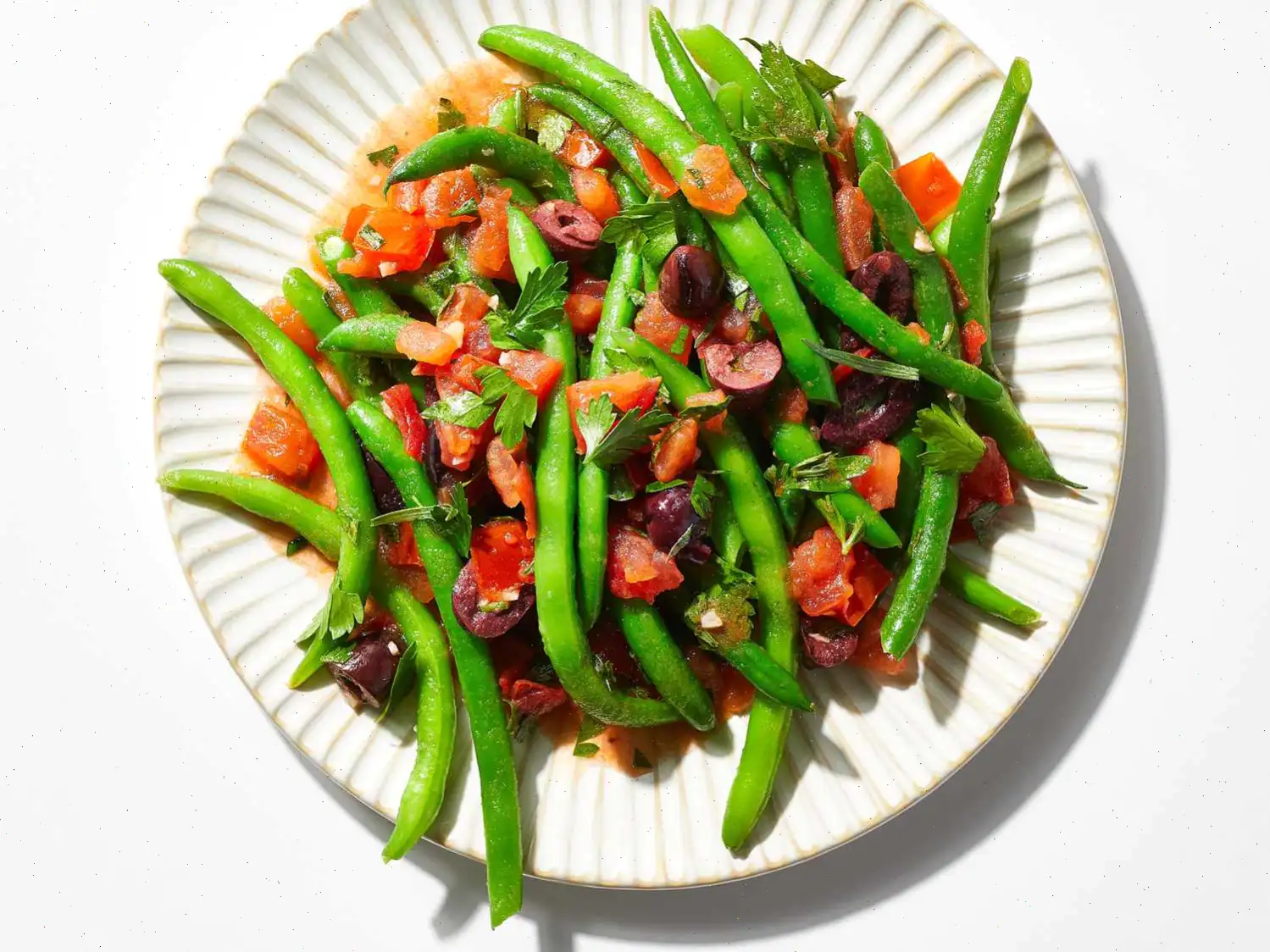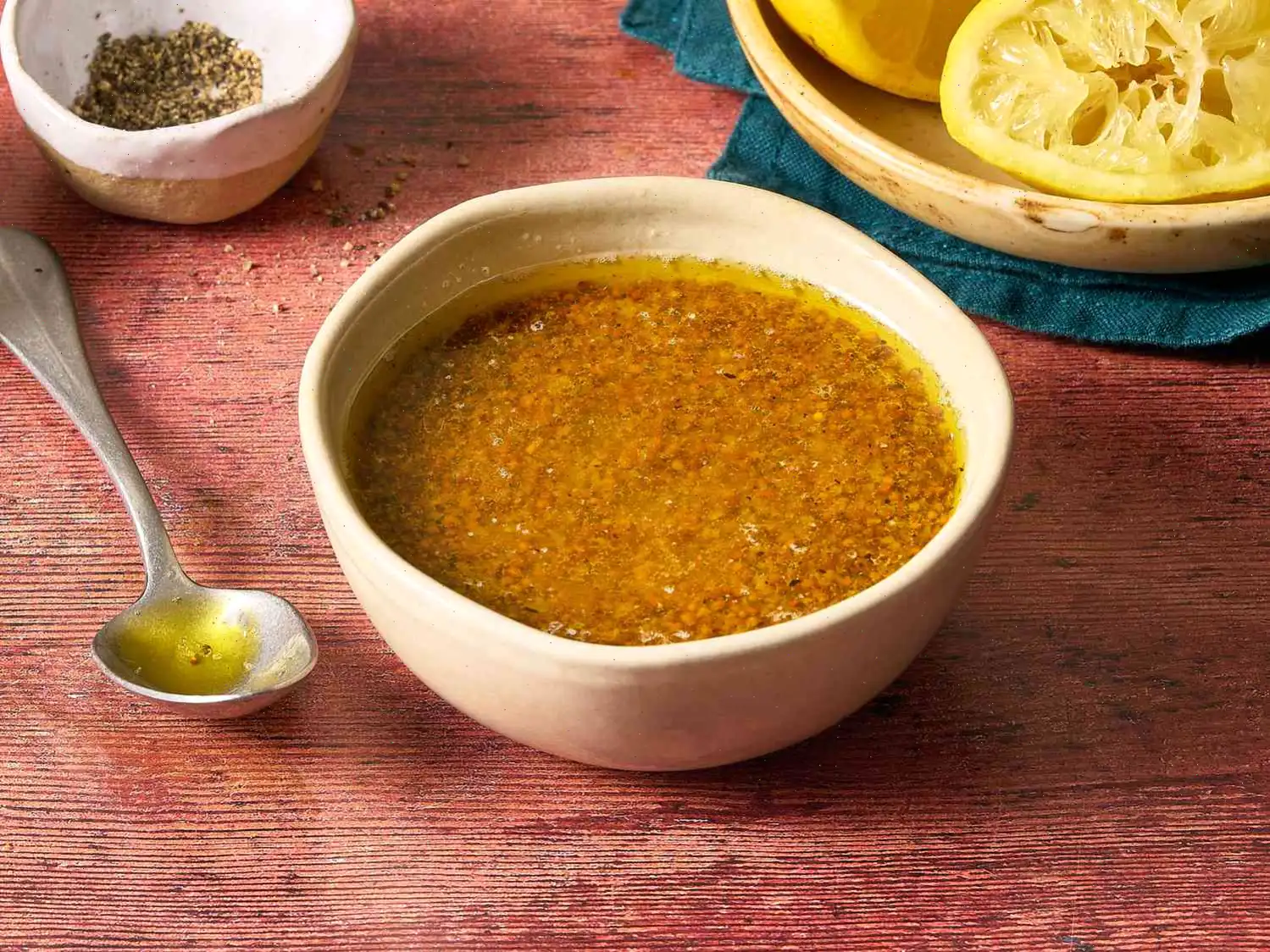
Green Beans with Olives and Tomatoes Recipe
Ingredients
- 1 tablespoon olive oil
- 1 clove minced garlic
- 4 cups steamed green beans
- 2 cups chopped tomatoes
- 1/4 cup kalamata olives
- 3 tablespoons chopped fresh herbs (such as parsley, tarragon, and/or basil), plus more for garnish
- 1/2 teaspoon kosher salt
- 1/2 teaspoon freshly ground black pepper
- 1 tablespoon red wine vinegar
Directions
- Heat the olive oil in a large pot over low heat.
- Add the minced garlic and cook for about 45 to 60 seconds, or until fragrant.
- Stir in the steamed green beans, chopped tomatoes, kalamata olives, and fresh herbs.
- Season with kosher salt and freshly ground black pepper, then toss everything together.
- Drizzle with red wine vinegar and toss again to coat evenly.
- Garnish with extra fresh herbs before serving.
Nutrition Facts (per serving)
| Nutrient | Amount | % Daily Value |
|---|---|---|
| Calories | 110 | |
| Total Fat | 6g | 7% |
| Saturated Fat | 1g | 4% |
| Cholesterol | 0mg | 0% |
| Sodium | 217mg | 9% |
| Total Carbohydrate | 14g | 5% |
| Dietary Fiber | 6g | 20% |
| Total Sugars | 7g | |
| Protein | 3g | 7% |
| Vitamin C | 24mg | 27% |
| Calcium | 79mg | 6% |
| Iron | 1mg | 8% |
| Potassium | 397mg | 8% |
* Percent Daily Values are based on a 2,000 calorie diet. Your daily values may be higher or lower depending on your calorie needs.
History and Origin of Green Beans with Olives and Tomatoes
The combination of green beans, tomatoes, and olives has roots in Mediterranean cuisine, particularly in Southern Europe. Historically, these ingredients were staples in Greek, Italian, and Provenal kitchens due to their availability and long shelf life. Green beans, introduced to Europe from the Americas in the 16th century, quickly became a versatile vegetable for home cooks. The addition of olives and tomatoes reflects the Mediterranean preference for bold, fresh flavors and the use of olive oil as a primary cooking medium.
Regional Variations and Characteristics
This dish varies slightly depending on the region. In Greece, green beans are often slow-cooked in olive oil with tomatoes and herbs like dill, creating a tender, flavorful dish known as "Fasolakia." In Italy, the dish may include capers or anchovies for added depth, while in Provence, herbs such as tarragon and basil are prominent. These subtle regional differences highlight local tastes and available produce, yet the core combination of green beans, tomatoes, and olives remains constant.
Distinction from Similar Dishes
Green Beans with Olives and Tomatoes stands out from other green bean recipes due to the tangy, briny flavor of olives paired with the freshness of tomatoes and herbs. Unlike green bean casseroles, which are rich, creamy, and baked, this dish is light, often served warm or at room temperature, and emphasizes the natural taste of the vegetables. The use of red wine vinegar adds a distinctive acidity that further differentiates it from other vegetable sides.
Common Serving Occasions
This dish is versatile and typically served as a side for both casual and formal meals. In Mediterranean homes, it accompanies grilled meats, fish, or roasted poultry, and is also popular as part of a mezze platter. It works well for summer dinners when fresh tomatoes and beans are abundant, and it is equally suitable for holiday meals or family gatherings as a refreshing, colorful side.
Interesting Facts
- The combination of green beans and olives has been associated with heart-healthy diets due to the high fiber content of beans and the monounsaturated fats in olive oil.
- Using fresh herbs like tarragon or basil not only enhances flavor but also reflects traditional Mediterranean cooking methods that favor aromatic seasoning over heavy sauces.
- In some regions, variations include adding orange zest or citrus juice, creating a subtle sweetness that balances the savory flavors.
- This dish exemplifies the Mediterranean principle of combining simple, fresh ingredients to produce a meal that is both nutritious and visually appealing.
FAQ about Green Beans with Olives and Tomatoes Recipe
Comments
Jason Ramirez
10/20/2022 05:24:22 AM
I substituted chopped orange slices for olives in this recipe.
Virginia Clark
11/20/2022 03:36:27 AM
Very delicious and simple! Thank you.








